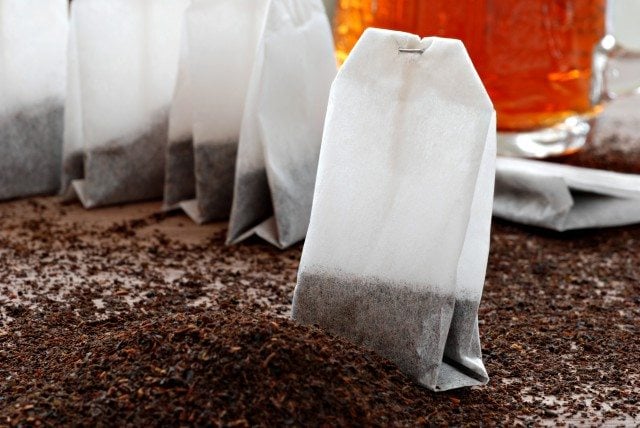India currently vies with China as the world’s biggest packaged tea for household consumption market.
From Mintel’s estimates, India consumed a total retail volume of 678,200 tons worth of packaged tea in 2017, followed by China in second place at 576,800 tons.
Meanwhile, Turkey (173,400 tons), Russia (134,200 tons) and Japan (92,900 tons) complete the top five global ranking.
While India is the leading market for retail volume sales globally, Turkey takes the lead when it comes to per capita consumption.
Behind Turkey, European countries feature strongly in the global per capita consumption ranking: the average Turkish consumer consumed 2.15 kg of packaged tea last year, followed by British consumers at 1.15 kg, Russian consumers at 0.91 kg, Japanese consumers at 0.74 kg, and German consumers at 0.67 kg.
“Traditionally, Chinese consumers prefer fresh tea in loose formats, so it makes sense that our research shows that India is ahead of China as the world’s leading retail packaged tea market,” said Loris Li, food and drink associate director.
Mintel research reveals that in 2017, most Chinese consumers (78%) were frequent users of freshly brewed loose tea.
RTD tea
Ready-to-drink (RTD) tea drinks also enjoy high penetration in China, with 49% of Chinese consumers identified as frequent RTD tea drinkers.
Tea bags, on the other hand, are frequently enjoyed by 45% of these Chinese respondents.
“Looking beyond top level market sizes and consumption figures, there is an interesting new tea culture brewing in both hot and ready-to-drink tea, fueling global and regional innovation activity,” said Julia Buech, global food and drink analyst.
Hot tea launches
According to Mintel Global New Products Database (GNPD), hot tea launches in Asia Pacific accounted for 27% of all global new tea product launches (including packaged hot tea and RTD iced tea) in 2017, while RTD tea launches in in Asia Pacific accounted for 13% of these global tea launches.
Hot tea introductions in Europe accounted for 30% of the world’s new tea launches in 2017, while European RTD tea launches represent 7% of these launches.
Meanwhile, North American hot tea launches accounted for 4% of the global pie of overall tea launches, while RTD tea launches take up 3% of this share.
“The RTD tea landscape is changing dramatically; having suffered for years from a ‘cheap’ and unhealthy image, the category is now undergoing a lifestyle makeover,” said Buech. “Artisanal production attributes, such as cold brew, are helping create a new premium tier in the segment.”
“Our research shows that cold brew is just emerging as an upscale taste and quality descriptor in RTD tea.”
“Better-for-you innovations from major beverage companies are further boosting the development of the RTD tea category.”
Still niche, the ‘cold brew’ descriptor featured in just 1% of global RTD tea launches in 2017, according to Mintel GNPD, with Asia Pacific accounting for 55% of these introductions, followed by Europe with 25%.
Tea bags
In addition, data from Mintel GNPD shows that tea bags were the leading format type of global new hot tea launch activity in 2017.
Indeed, 84% of all new tea launches in North America during this period were tea bags.
In Europe, tea bags accounted for 75% of all new regional tea launches in 2017, and 45% in Asia Pacific.
Meanwhile, Asia Pacific is currently driving loose formats in packaged hot tea innovation.
Of all new tea launches in Asia Pacific in 2017, loose tea formats accounted for 36%, compared to 19% in Europe and 12% in North America.
“Most Asian consumers are, at the end of day, traditionally inclined to enjoy tea in loose formats—which is also likely the reason behind Asia Pacific’s lead in driving loose formats in packaged tea innovation,” said Li.
“However, the tea bag category in China, and the wider Asia Pacific region, has definite growth potential as we see more and more tea bag innovations coming from Asian tea manufacturers.”
For energy
In the functional scene, energy has grown as a focus of innovation.
Mintel GNPD shows that in 2017, teas described as ‘energy-boosting’ accounted for 11% of all functional tea introductions globally, up from 9% in 2015.
It seems boosting the emphasis on energy can help tea compete with coffee, especially for morning occasions.
About 62% of US adults drink coffee in the morning, while 24% drink tea.
In China, the door is open for tea to adopt an ‘energy drink’ status; as 65% of consumers surveyed drink RTD tea when doing outdoor sports (eg jogging, playing football, cycling) while 58% drink RTD tea when doing exercise at gym or sports centers.
In the UK, 22% of consumers are interested in seeing ‘energy-boosting’ as a health or functional benefit provided by tea.










